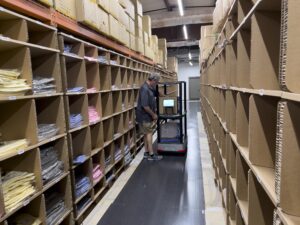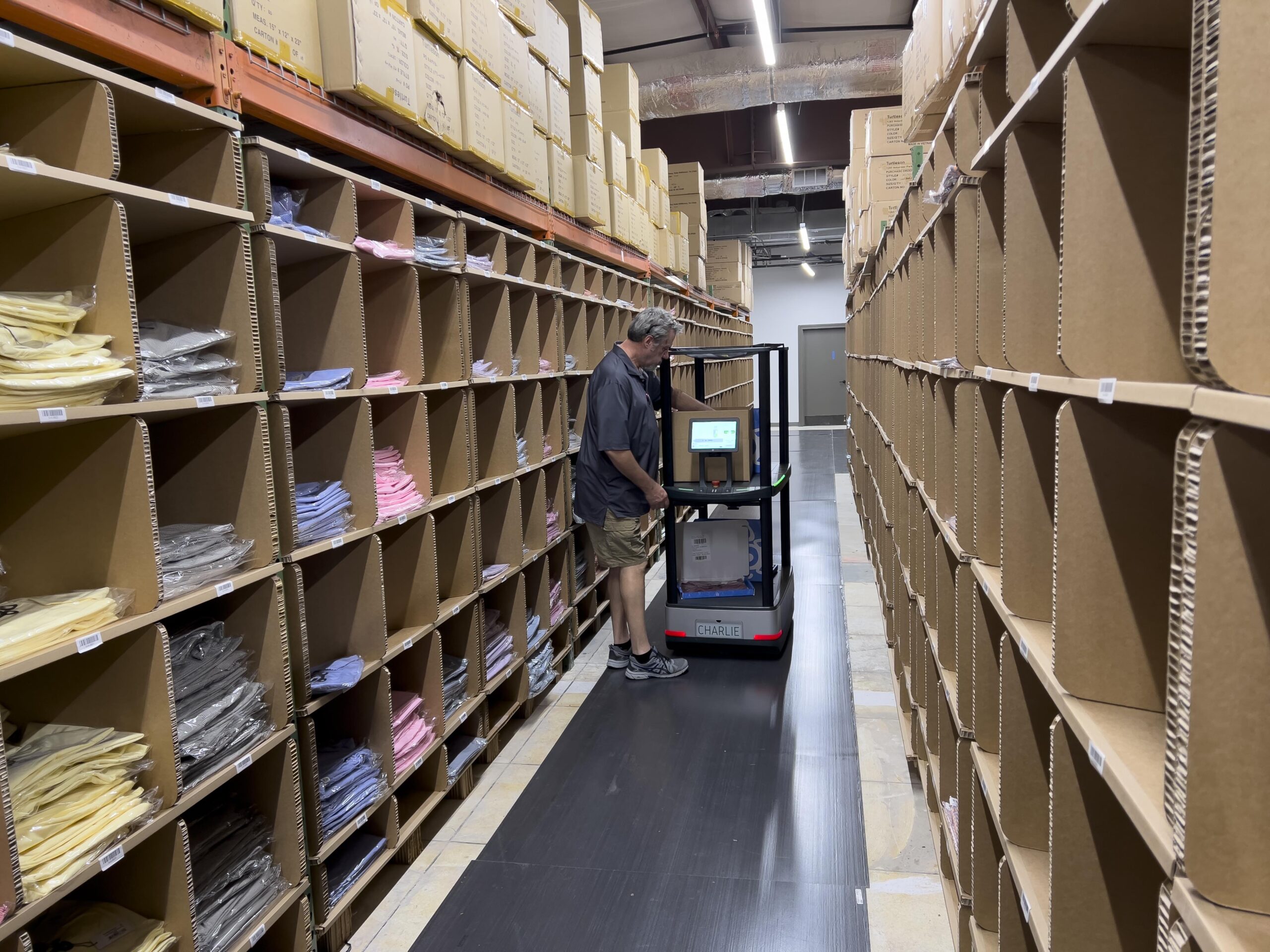By integrating robotics into traditional warehouse solutions businesses have been able to revolutionise both their efficiency and productivity. Warehouse automation that’s able to mesh seamlessly with established shelving, pallets and racking systems is playing an integral part in helping to streamline operations.
By minimising the need for human intervention, warehouse robotics can help you to significantly reduce errors, and speed up fulfilment processes. With the aid of advanced AI and sensors, robots can navigate spaces, retrieve items, and effortlessly optimise storage layouts.
And what’s even better, it’s possible to achieve all these benefits without having to make any changes to existing warehouse infrastructure.
In this post we’ll examine some of the ways you can integrate warehouse robotics into your existing warehouse storage solutions.
The rise of robotics in warehousing
The global value of warehouse robotics was $4,400 million in 2020, and it’s projected to rise to $15,792 million by 2030 – a growth of 13.2%.
The use of robotics in the warehouse has brought about a paradigm shift in how companies manage their logistics. AI and automation are now vital cogs in the supply chain, helping to accelerate tasks such as sorting, packing and retrieving goods, whilst cutting operational costs and expediting deliveries. As the demand for rapid e-commerce fulfilment intensifies further, warehouse robotics is enabling companies to maintain the precision and speed they need to stay competitive.
Traditional storage solutions: An overview
Traditional warehouse storage solutions include pallet racking, mezzanine floors, shelving units and bulk storage systems.
- Pallet racking optimises use of vertical space and allows for the efficient storage of palletised goods.
- Shelving units offer a level of versatility that’s useful for storing smaller items, and they can facilitate access to stored goods.
- Mezzanine floors make good use of vertical space for added storage capacity.
- Bulk storage systems are efficient at storing large quantities of loose items.
All these solutions can provide a solid foundation for warehousing. They remain essential ways to create efficient warehouse layouts, especially when used alongside emerging technologies.
The interaction of robotics and traditional storage
Warehouse robotics and traditional warehouse storage can work together to transform the face of warehouse operations. Robots can navigate easily through conventional shelving, racks and pallets, optimising retrieval and storage processes. When used in collaboration, robotics and traditional storage solutions can speed up operations, increase accuracy, and eliminate the need for repetitive and time-consuming manual labour.
Warehouse robotics can elevate the overall efficiency of established warehouse solutions, and reshape operations, without any need to fundamentally change the warehouse infrastructure. This interaction between the old and the new allows companies to boost productivity without adding on any excessive costs.
Enhancing efficiency with robotics
Warehouse automation reduces downtime, and enhances accuracy, whilst optimising inventory management. Robots, unlike humans, can work tirelessly, and perform repetitive tasks without making any errors. This can help companies to maintain streamlined operations 24/7, whilst freeing up staff to focus on more strategic business requirements.
Improving accuracy with robotics
Warehouse robotics enhances accuracy by nature of its precise and consistent execution. When equipped with advanced sensors and AI algorithms, robots can locate items quickly, without any risk of mis picks or misplacements. Automation also eliminates factors like fatigue, distractions and variability – all factors which can impact human performance.
Ensuring safety with robotics
Selecting best-in-class hardware and intelligent software is critical when it comes to ensuring safety with warehouse robotics. Implementing vigilant protocols is another crucial factor when you’re establishing an environment where human-robot interaction can thrive, with minimal risk.
These elements will help to create a safe warehouse environment when working with robotics:
- Use of hardware with advanced sensors, for example LiDAR and cameras: These are adept at detecting obstacles and humans in real-time, enabling robots to move about safely.
- Using software which features precise mapping and algorithms, to help prevent collisions, and promote safe and efficient paths.
- Allowing staff to use emergency controls to stop automation manually.
- Giving employees full training on how to interact with robotic systems.
- Safety-checking equipment regularly.
Successful integration of robotics and traditional storage
To successfully integrate warehouse robotics into a traditional storage environment, meticulous planning is required. The first stage should be to assess the workflow dynamics, and create storage layouts that optimise pathways for robots.
It’s also important to harmonise AI-driven algorithms with the established storage infrastructure, to ensure efficient item retrieval and placement.
Making the transition: Integrating robotics in your warehouse
Making the transition to integrating robotics in the warehouse requires a strategic approach. You’ll first need to evaluate your current processes and storage setup, in order to identify areas that could benefit from automation – before selecting robotic systems that align with your workflows.
It’s recommended to seek outside expertise to help you design efficient robotic pathways, and to ensure you establish safe protocols. Gradually introducing warehouse automation can be a low risk way to make the transition. This will not only minimise disruption to your current operations, but allow warehouse staff to adapt to the new technologies over time.
PALLITE® PIX®: A modern solution for modern warehouses

PALLITE®PIX® warehouse storage solutions can help you unlock the heightened efficiencies, accuracy, and adaptability that comes with implementing warehouse automation. PIX® storage systems are able to seamlessly integrate with new technologies, including warehouse management systems (WMS). This allows them to accommodate robotic automation, fostering efficiency and item retrieval.
PALLITE®PIX® storage units can also be equipped with advanced sensors that are able to synchronise with AI algorithms, optimising navigation and reducing errors. Their lightweight yet durable construction makes them highly portable and re-configurable too, to adapt to changing inventory levels and sizes.
PALLITE® PIX® products are not only fit for modern warehouses, but they’re fully sustainable. Made from recycled paper, PIX® storage systems are fully recyclable at the end of their lifetime.
The innovative convergence of PIX® cardboard-based storage – and cutting-edge technology – offers companies a versatile, future-proofed approach to warehouse storage.
If you’re looking for a way to ramp up your warehouse processes and move towards a more circular supply chain, get in touch with us here at PALLITE® Group. We can help you assess your current warehouse environment, and offer you expert advice on how to improve your storage layout – and achieve rapid business results.
Written by David Rose
